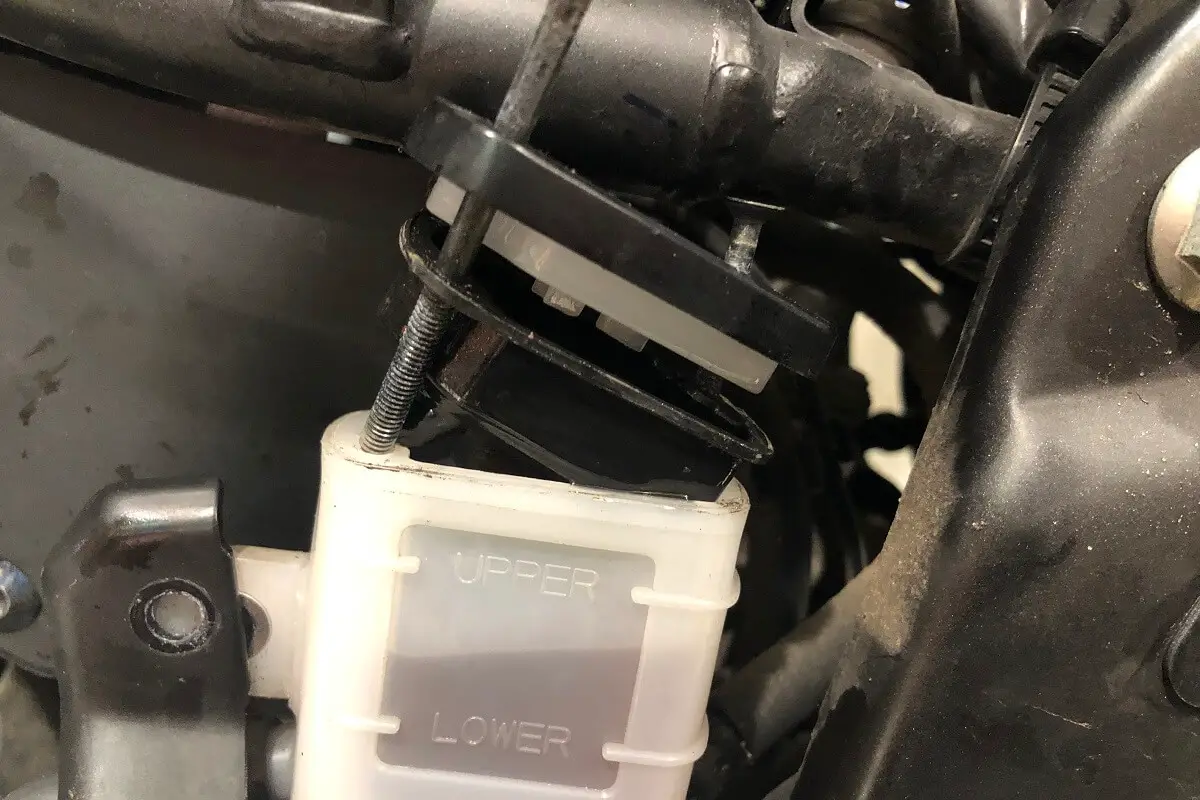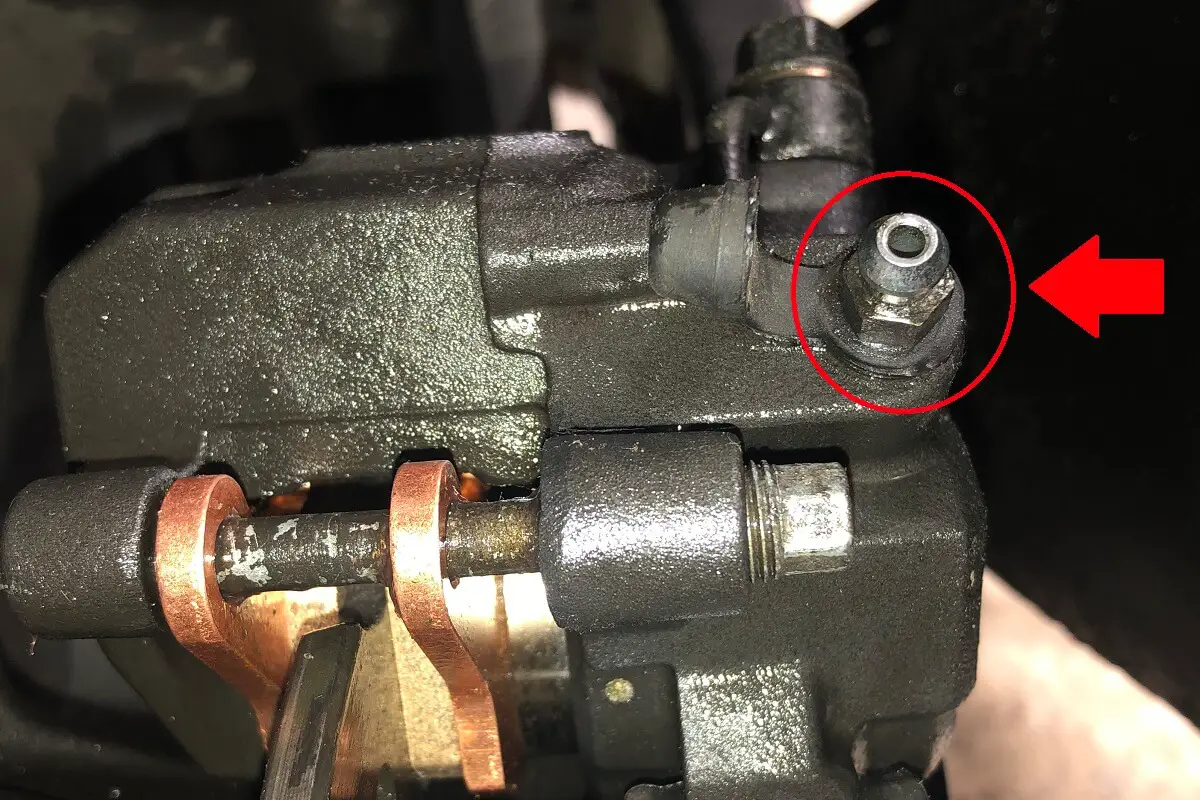Hi. Replacing brake fluid in a motorcycle is a 20-minute job. I’ll show you how to do it on my Honda CB500X’s rear brake. In my case, I’ll need an 8mm wrench, a 12mm wrench, a 5mm Allen key, a rubber hose, and new brake fluid.
Contents
#1 Get Correct Brake Fluid
First of all – check which brake fluid is used in your bike’s braking system. This should be written on top of the brake fluid reservoir. In my case it is DOT4.


#2 Locate the Brake Fluid Reservoir
Now let’s make sure we have access to the brake fluid reservoir cover. In my case, I need to remove the plastic cover and unscrew the reservoir from its holding bracket. My bike is a Honda CB500X but the rear brake reservoir is located near the right side foot peg on most chain drive bikes.


#3 Inspect old Brake Fluid
Now I can remove the reservoir cover to see how the brake fluid looks after 2 years and 58k km. I can see it is dark orange. In the beginning, I thought it was okay but when I compared the color to the new brake fluid’s color – I was surprised by the difference. So it needs to be replaced.


#4 Replace the Brake fluid
So how brake fluid is replaced? It is pumped through the braking system while adding new brake fluid into the reservoir. The brake caliper has a valve that can be opened with an 8mm wrench to allow old fluid to get out when the brake lever/pedal is pressed. the new fluid that is added to the reservoir is sucked into the system as a replacement.

#5 pump The brake fluid
Place an 8mm wrench onto the valve bolt and then squeeze the rubber hose on top of the valve. The rubber hose is needed so that the braking fluid does not get on top of your braking caliper and other parts like the swingarm. Brake fluid is highly corrosive and will damage the paint. Secondly, it significantly reduces the chance of getting air bubbles into the braking system when bleeding the brakes.


Now press the brake pedal, and open the valve by rotating the wrench counterclockwise. The brake pedal will move further as brake fluid comes out of the opened valve. Now close the valve and only after it is closed release the brake pedal. Now press the pedal 2 times without opening the valve – you will see how brake fluid in the reservoir decreases slightly as it is getting pumped into the system and pressure builds in the system.
Now repeat this process 3 more times while checking the brake fluid level in the reservoir. When the brake fluid level decreases to the lower indicator mark on the reservoir – fill in the reservoir with new brake fluid. DO NOT ALLOW brake fluid level to decrease below the LOW indicator mark on the reservoir. If that happens – air will be sucked into the brake fluid hose which will require significantly more work to get out of the system.
In my case, I went through 150ml of brake fluid and filled in the reservoir 9 times from low to high level while pumping old brake fluid out of the system. Here is what new brake fluid looks like in the reservoir. You can see that it is more transparent and the color is significantly lighter.

Now make sure to tighten the valve on the brake caliper to the spec. Fill in the brake fluid reservoir to the upper limit if you have new brake pads installed.
If your brake pads are halfway worn – fill up to the middle between the lower and upper levels. This approach ensures that when you switch to new brake pads, there will be enough space in the reservoir for the brake fluid, as you will need to push the master braking cylinder in to compensate for the thicker brake pads.

#6 Assemble everything back together
Now assemble everything back together. Press the brake pedal a few times to make sure everything works. Additionally, spray the areas around the brake caliper and brake fluid reservoir with water and wipe them clean to remove any brake fluid that might have spilled.
And of course, I made a mess.





